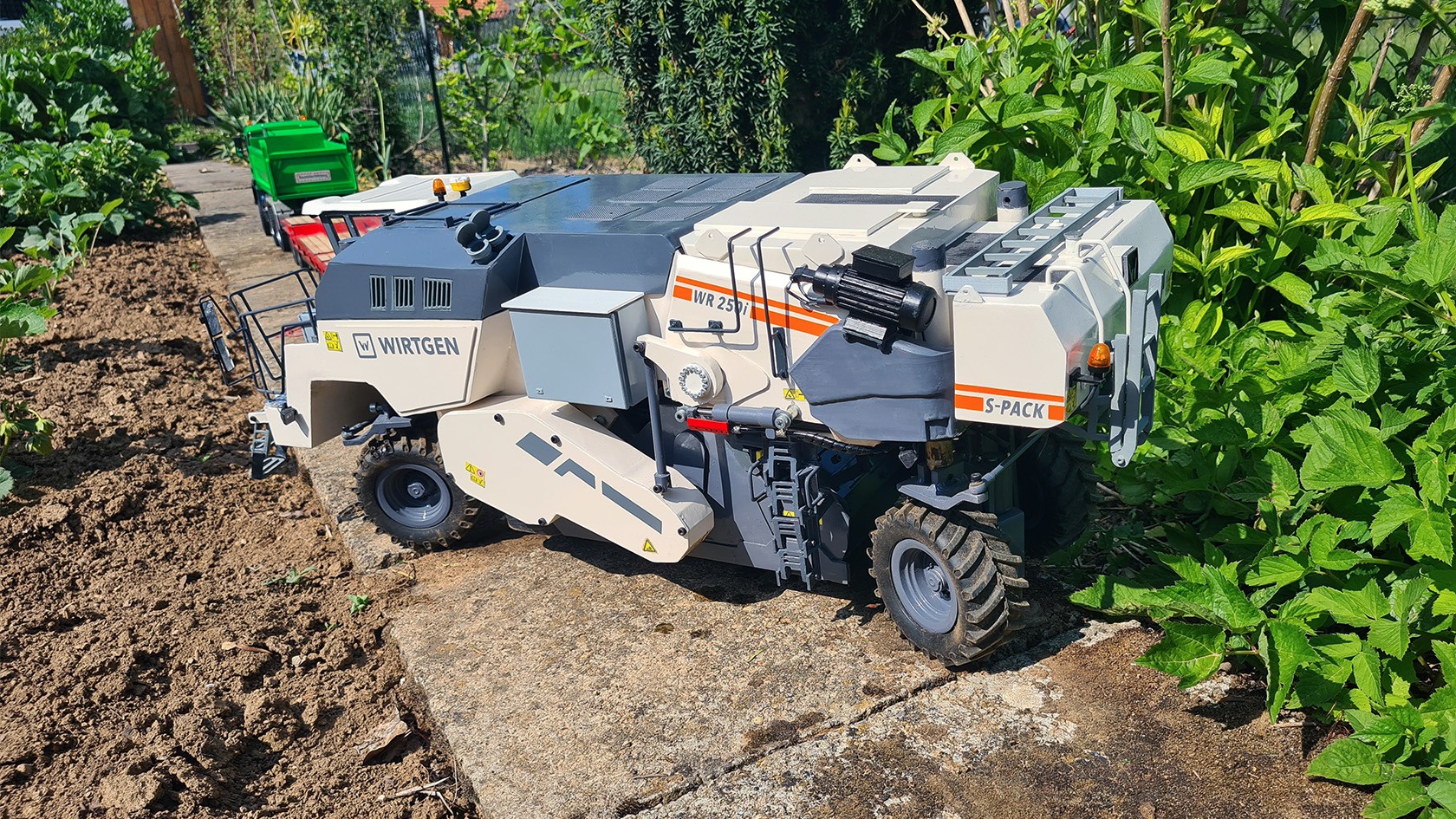That’s pretty impressive. Is there anything else that can be remotely controlled?
The front and rear flaps on the mixing chamber can be individually opened. The cabin can be shifted to the side to ensure that the operator has an ideal view of the machine’s zero edge, and I equipped the machine with all the LED working lights and the flashing warning beacons you’ll find on the original.
How big is the model, and what do you do with it?
It’s about 800 mm long and 210 mm wide. The all-up weight is around 20 kg, so it’s quite a handful. I actually do put all my models to work. I use the WR for loosening up the soil in my garden. In the vegetable patch, for example. (he says with a big smile)









